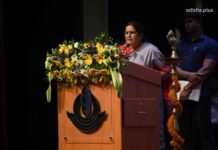By Prof Ujjwal K Chowdhury

Digital is on the roll and advertisements and content stickiness have both grown remarkably over the last two years, across the globe and in India, with video online taking the lead in consumers’ changing preferences.

Omni-Media Rise:
Significantly the rise of the Omni-media and multi-channel experiences is the most visible digital innovation in media and entertainment that one can see. At the consumer end, watching on TV, cinema screen or hand-screen and tweeting or Facebooking, reading digitally and sharing in social media, watching live and tweeting or going FB live, etc are now commonplace. And, at the producer end, a scene is being conceived not just for the screen (large or small), but also for FB and Insta use and attempting viral spread.

Personalization of Experiences:
Second, getting content wherever, whenever and on whichever devices is the other major digital impact in media consumption. Viewing is moving from silver and electronic screens to the handheld one. OTT platforms are commanding an increasing army of consumers, and entering into other Indian languages, with OTTs moving from entertainment to non-fiction (documentary or news-based content) as well. Reading is moving from the physical book to kindle, magzter, e-books, and audio-books as well. The sale of books has remarkably come down, while self e-publishing or Wattpad publishing are on the rise.

AI in Media & Entertainment:
Third, the artificial intelligence impact on media and entertainment is another work on the fast lane. Language processing, image recognition, speech recognition, deep learning: the impact of AI on creativity can be seen through these ways to begin with. McCann Japan is using AI to analyse client briefs of a specific client or in a given sector/domain first to prepare for advanced pitches for campaigns. AI is being used to create movie plot points based on box office performances of similar films in the past or films in a given region. Horror movie trailers take help of trailers that AI has already had processed and annexed. Amazon has acquired Washington Post and using AI to customize news packages for each reader and based on reading preferences, it is mapping the commercial needs or purchase needs of the readers.
However, it must be noted that AI can only impact when there is a precedence, or it can replicate. It cannot create or innovate from scratch. It has to have a template to work upon. Creating the template or innovating is a human endeavour. At least till now.

Virtual & Augmented Reality Impact:
This is another digital innovation on the rise in media and entertainment. One can today enjoy Euro Soccer through VR and augment the experience too. Pokemon-Go is a good example of Mixed Reality, blending AR, VR and game-playing physically. New York Times has given Google cards to readers for VR experience, leading to more brand NYT loyalty and using the Big Data generated to determine content mix in NYT too.
Curated Content:
Initially, most OTT platforms were aggregators of content. Then they evolved to be curators. Today Netflix or Amazon is curating content on what we should watch and buy based on our earlier viewing and buying behaviour. Now the next phase coming up is that of producers of content. Netflix has begun to produce content using curating generated Big Data to create ‘instant audiences’ for their new shows and products. It has earmarked $75 billion in this financial year for production original content.

Smart Advertising:
Another digital innovation is the rise of smart advertising through the combined impact of deep analytics, through machine learning, plus AI-AR opportunities. Today, product placements on the digital screen are getting personalized. No vanila or the same ads for all viewers. One can order one’s favourite actor’s jacket by clicking when the product appears. Personalized targeted advertising, identifying the audience and the product/service both, defines the new age of smart advertising.
Roadmap Ahead:
The new media services which are and will be in high demand shall include convenience, education, premier content, and video on demand. And signs of these are tell-tale. Today, brands need all: paid, earned and owned media and content, and new media can help create the virality of paid and owned media, and amplify the earned media through others’ platforms.
Consumers are increasingly smart to understand the differences between edit, ad and propaganda. Consumers are spotting the differences and will use ad-blocking software. However, branded engaging content with story-telling approach will continue to grow in importance for advertisers and consumers both.

The digital media is also allowing the rise of new hitherto unseen sources of content till the last one decade. So we find user-generated content (UGC), citizen journalism and amateur influencer driven content combining to usher in an innovative era of content on the digital. For example, Swedish Pie Die Pie (9 billion YouTube views), Indians like Bhuvan Bam or Prajakta Kolhi are popular similar YouTube Influencers in India. In a way, there is a growing democratization of content, which also has led to a huge proliferation of unverified fake news content as well from vested interests.
Crowd-funded content and campaigns (as seen in case of electoral campaigns of Atishi and Dr Kanhaiya Kumar recently) is another digital innovation in communication. Several films and web series are also going through the crowd-funded route.
Finally, E-Sports with multi-player video game contests has already crossed $1 billion turnovers and is another digital innovation to look out for in the entertainment sector.
The author is a noted media academic and columnist and is currently the Pro Vice Chancellor of Adamas University.


























Nice information and interpretation on the future of digital media and the way users consume it. Thank you Prof. Chowdhury.